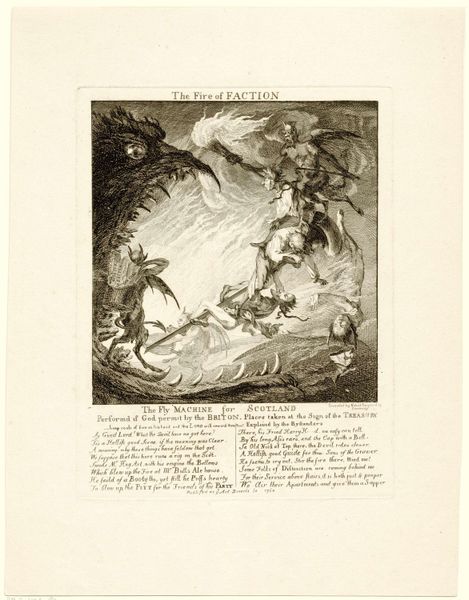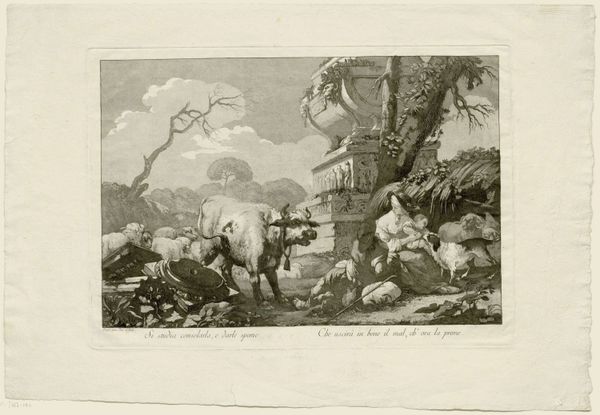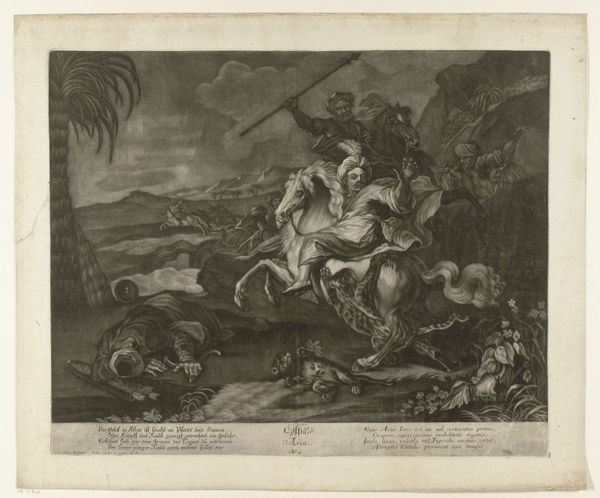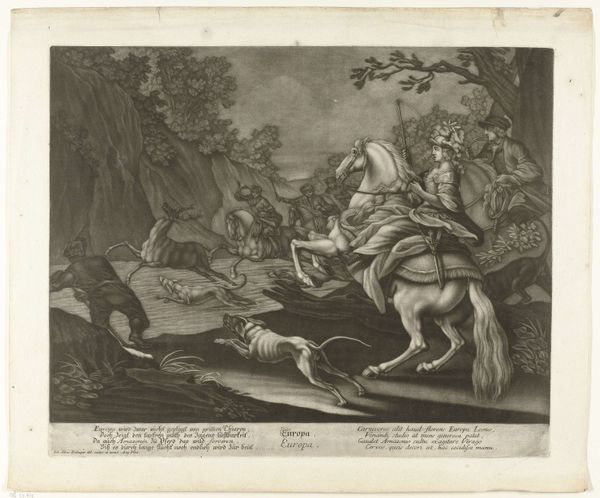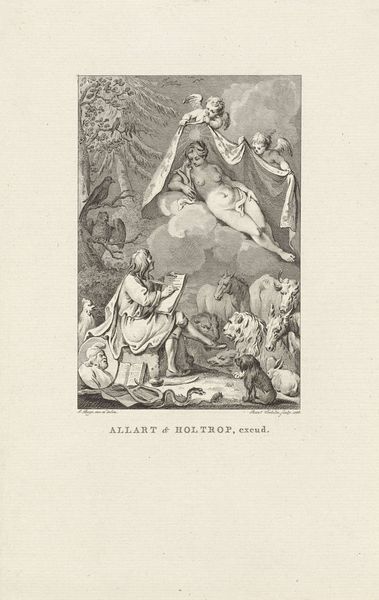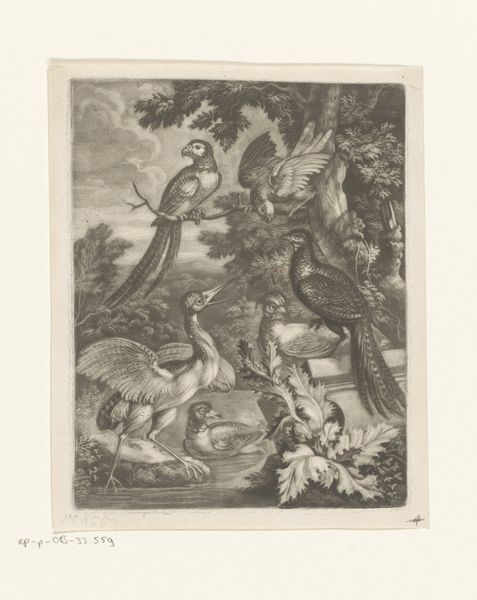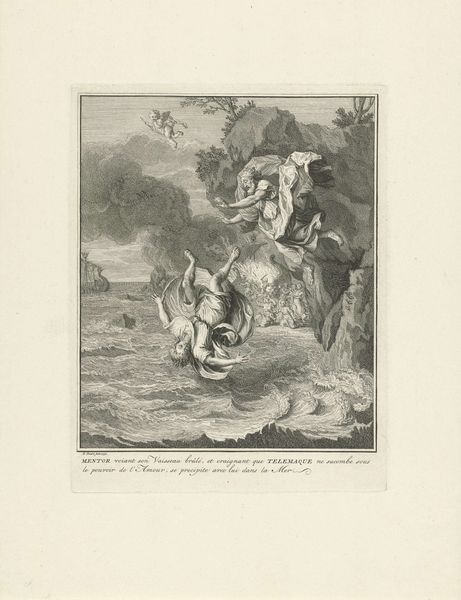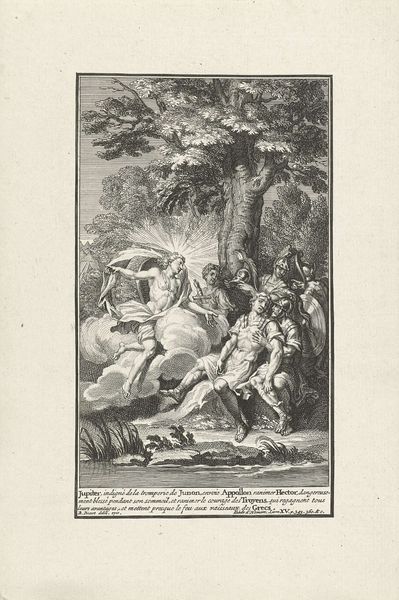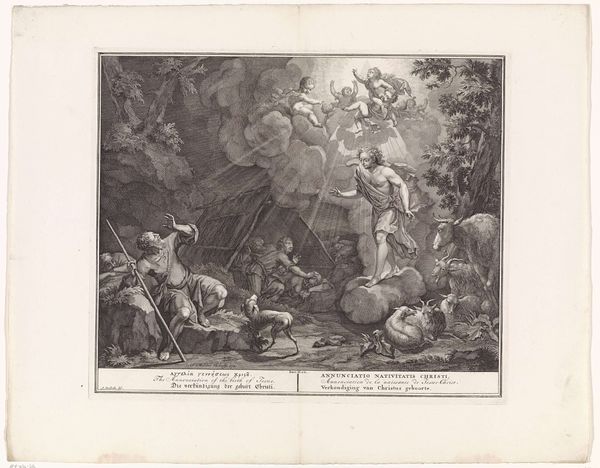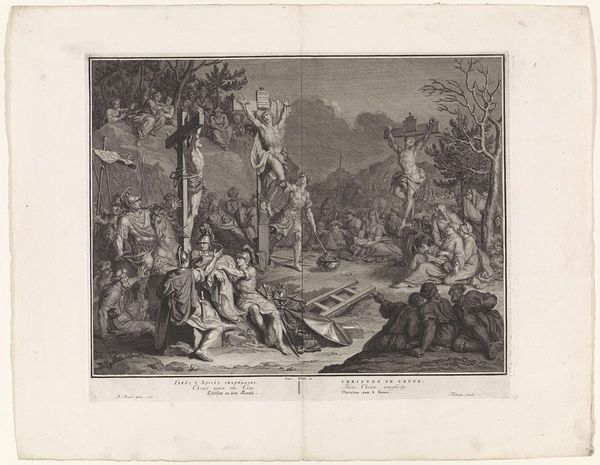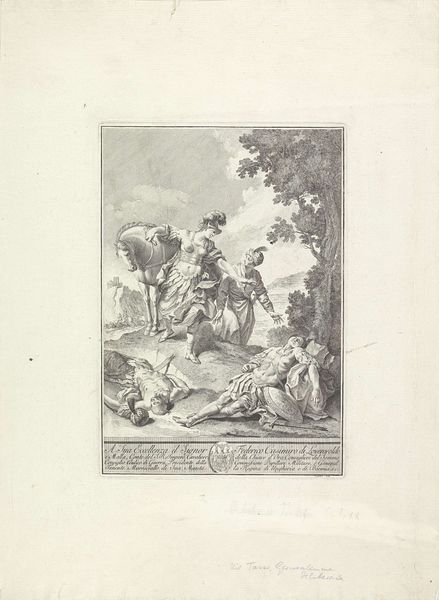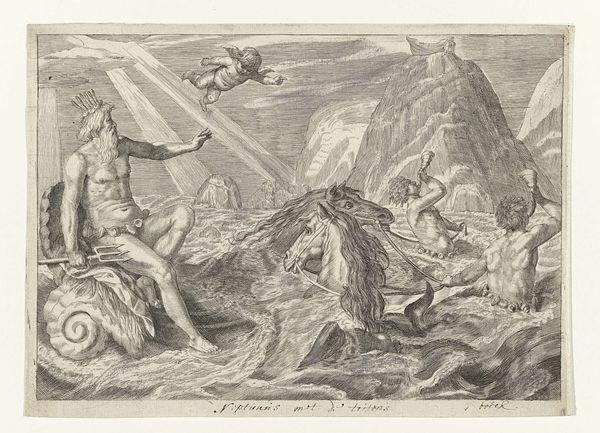
Jagd op wild zwijn. / Chase of wild boars. / Wildschwein Jagd. / Chasse au sanglier. / Caza de javali c. 1820 - 1865
0:00
0:00
print, engraving
#
animal
# print
#
pencil sketch
#
old engraving style
#
landscape
#
romanticism
#
genre-painting
#
engraving
Dimensions: height 329 mm, width 422 mm
Copyright: Rijks Museum: Open Domain
This print, Chase of Wild Boars, by Friedrich Gustav Schulz, depicts a chaotic hunting scene. Its context lies in the changing social and cultural landscape of 19th-century Europe. During this time, hunting was not just a sport but also a symbol of social status. Images of hunting scenes were popular among the aristocracy and the rising middle class, keen to emulate aristocratic traditions. This print, produced for wider circulation, speaks to the democratization of such imagery. The detailed depiction of the hunt, the aggression of the dogs, and the struggle of the boar reflect a fascination with nature and the relationship between humans and animals. To understand this artwork fully, we might consult period hunting manuals, social histories of leisure, and studies of the print market. By situating the artwork within its specific historical and cultural moment, we can better understand its significance and meaning.
Comments
No comments
Be the first to comment and join the conversation on the ultimate creative platform.
